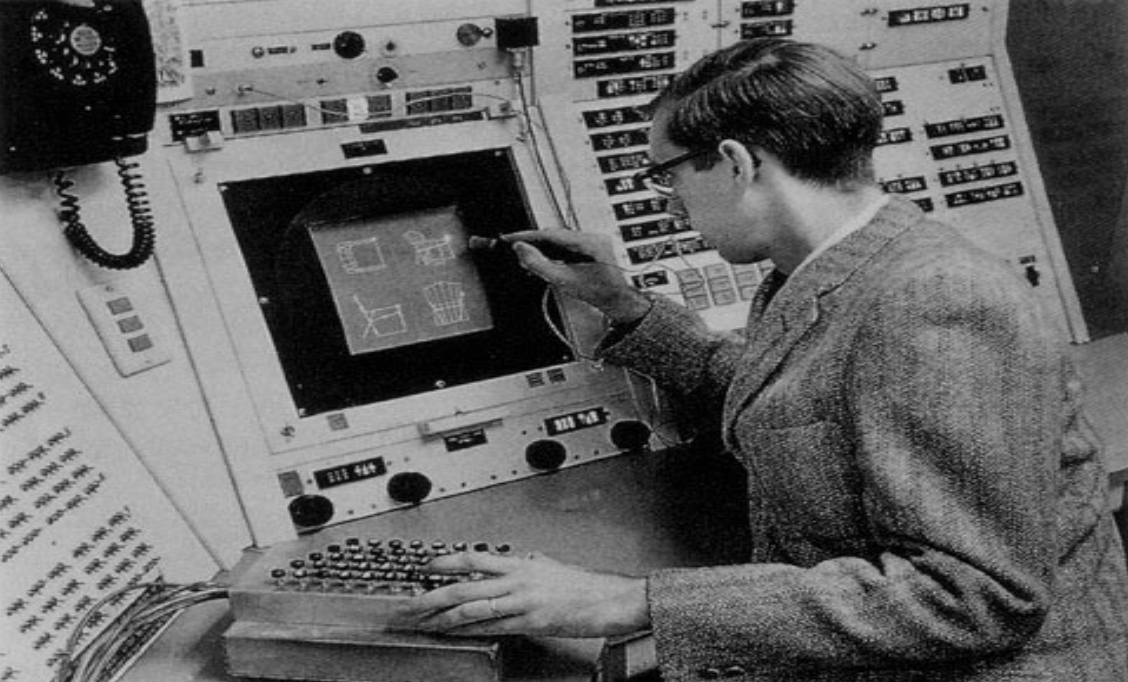Ivan Sutherland released Sketchpad on December 7, 1963, demonstrating that computer graphics can be used for both technical and aesthetic applications in addition to being a revolutionary technique of Human Computer Interaction. It could handle restrictions; for example, drawing a restricted ellipse resulted in a circle. Sketchpad also has certain CAD functions, such as the ability to calculate loads on beams.
Sketchpad allowed users to draw on a computer screen with a light pen. It offered the "ring" list structure and used value inference to solve constraints. The drawings created using Sketchpad were saved in the computer's custom constructed ring structure. This ring structure provided immediate topological information processing, which eliminated the need for any searching.
Sketchpad was based on the revolutionary Lincoln TX-2 computer, which was released in 1956. It was a "live" computer that was used to test the use of surface-barrier transistors in digital circuits.
Drawing was used as the computer's unique interaction medium in Sketchpad. The system had input, output, and computation routines that enabled it to decode data drawn directly on a computer screen. Drawing scientific, mechanical, mathematical, electrical, and animated designs was a breeze using Sketchpad.
Sketchpad was a one-of-a-kind technology that aided in the understanding of processes such as the concept of links, which could be conveyed visually. It was simpler to design very accurate and repetitive drawings using Sketchpad. It also had the ability to alter an image that had already been drawn.
Ivan Sutherland created Sketchpad, a groundbreaking computer software. Sketchpad was a pioneer in the field of human-computer interaction (HCI). Sketchpad is regarded as the origin of today's computer-aided design (CAD) software. It is also recognized as an important step forward in the development of computer graphics. Sketchpad, for example, was used to develop cutting-edge object-oriented programming and the graphical user interface (GUI).
For creating Sketchpad, Ivan Sutherland got the Turing Award in 1988 and the Kyoto Prize in 2012.



.jpg)

.jpg)


